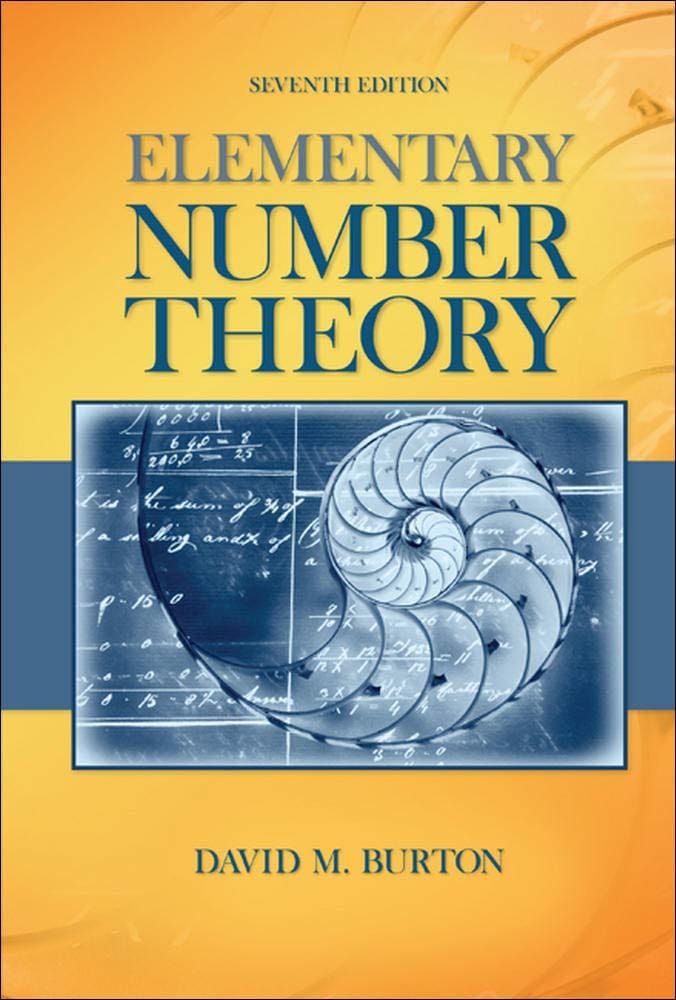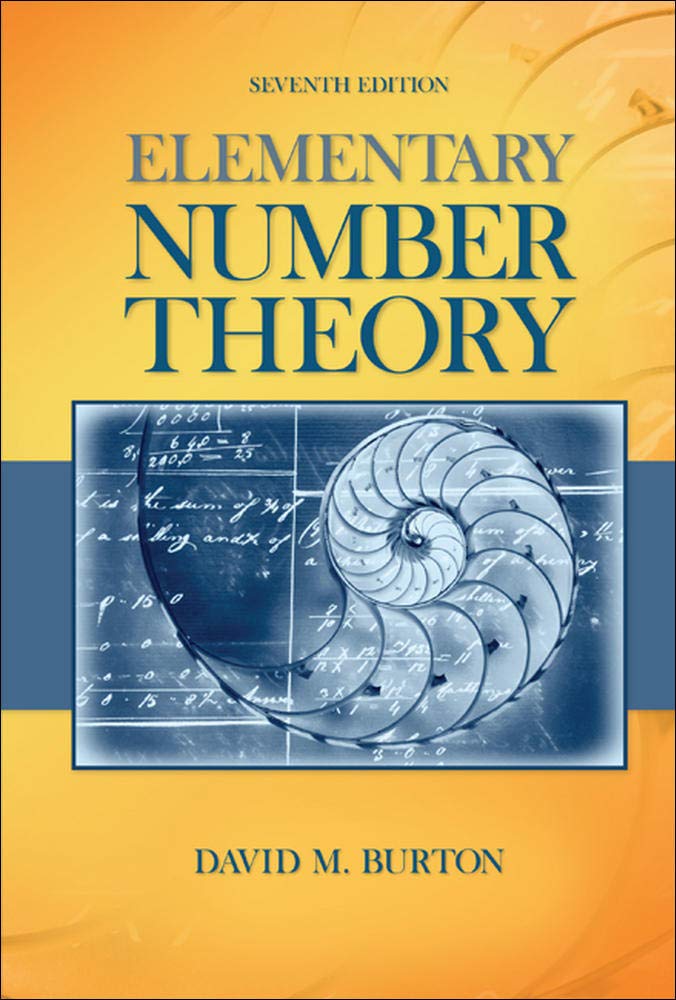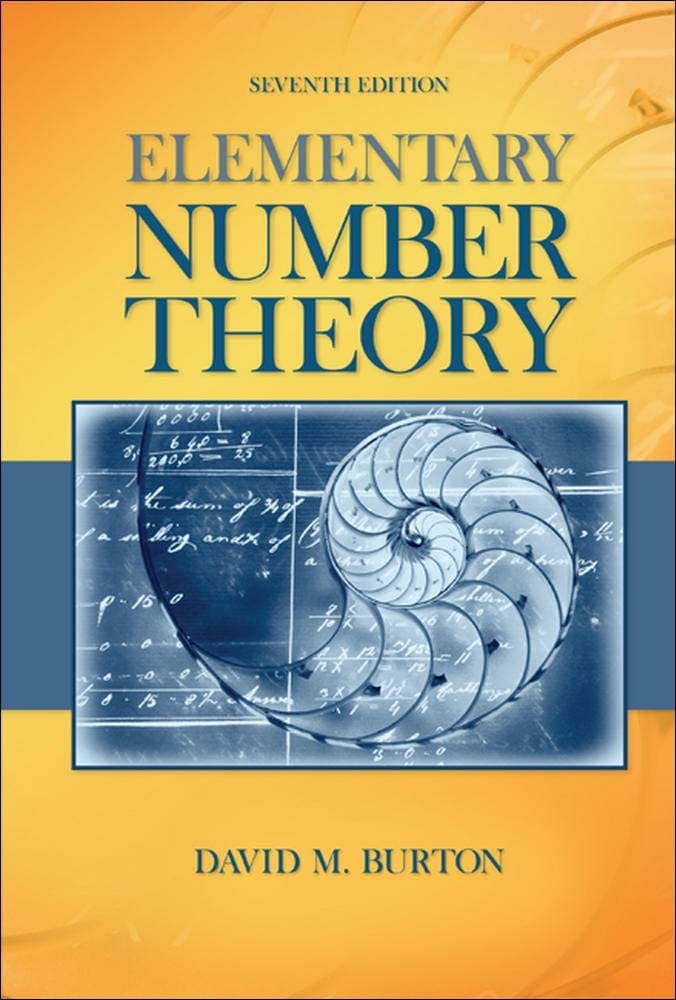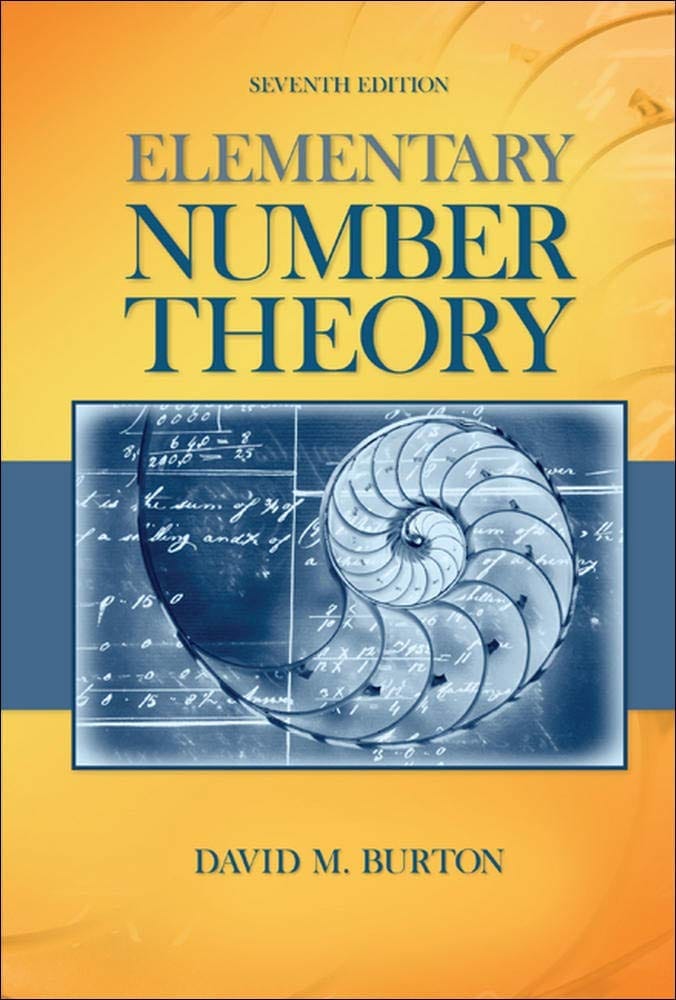
Elementary Number Theory Problems 4.2 Solution (David M. Burton's 7th Edition) - Q11
My Solution for "Verify that $0, 1, 2, 2^{2}, 2^{3}, ..., 2^{9}$ form a complete set of residues modulo $11$, but that $0, 1^{2} , 2^{2} , 3^{2} , ... , 10^{2}$ do not."
Table of Contents
Background
All theorems, corollaries, and definitions listed in the book's order:

I will only use theorems or facts that are proved before this question. So you will not see that I quote theorems or facts from the later chapters.
Question
Verify that $0, 1, 2, 2^{2}, 2^{3}, ..., 2^{9}$ form a complete set of residues modulo $11$, but that $0, 1^{2} , 2^{2} , 3^{2} , ... , 10^{2}$ do not.
Solution
$$ \begin{equation} \begin{split} 0 &\equiv 0 &\pmod {11} \\ 1 &\equiv 1 &\pmod {11} \\ 2 &\equiv 2 &\pmod {11} \\ 2^{2} &\equiv 4 &\pmod {11} \\ 2^{3} &\equiv 8 &\pmod {11} \\ 2^{4} &\equiv 5 &\pmod {11} \\ 2^{5} &\equiv 10 &\pmod {11} \\ 2^{6} &\equiv 9 &\pmod {11} \\ 2^{7} &\equiv 7 &\pmod {11} \\ 2^{8} &\equiv 3 &\pmod {11} \\ 2^{9} &\equiv 6 &\pmod {11} \\ \end{split} \nonumber \end{equation} $$Thus, $0, 1, 2, 2^{2}, 2^{3}, ..., 2^{9}$ form a complete set of residues modulo $11$.
$$ \begin{equation} \begin{split} 0 &\equiv 0 &\pmod {11} \\ 1^{2} &\equiv 1 &\pmod {11} \\ 2^{2} &\equiv 4 &\pmod {11} \\ 3^{2} &\equiv 9 &\pmod {11} \\ 4^{2} &\equiv 5 &\pmod {11} \\ 5^{2} &\equiv 3 &\pmod {11} \\ 6^{2} &\equiv 3 &\pmod {11} \\ 7^{2} &\equiv 5 &\pmod {11} \\ 8^{2} &\equiv 9 &\pmod {11} \\ 9^{2} &\equiv 4 &\pmod {11} \\ 10^{2} &\equiv 1 &\pmod {11} \\ \end{split} \nonumber \end{equation} $$As we can see here, $1^{2} \equiv 10^{2} \pmod {11}$, $2^{2} \equiv 9^{2} \pmod {11}$, $3^{2} \equiv 8^{2} \pmod {11}$.... The relationship is even symmetric here.
Therefore, $0, 1^{2} , 2^{2} , 3^{2} , ... , 10^{2}$ do not form a complete set of residues modulo $11$.
Read More: All My Solutions for This Book
Related Pages
Ranblog Newsletter
Join the newsletter to receive the latest updates in your inbox.


